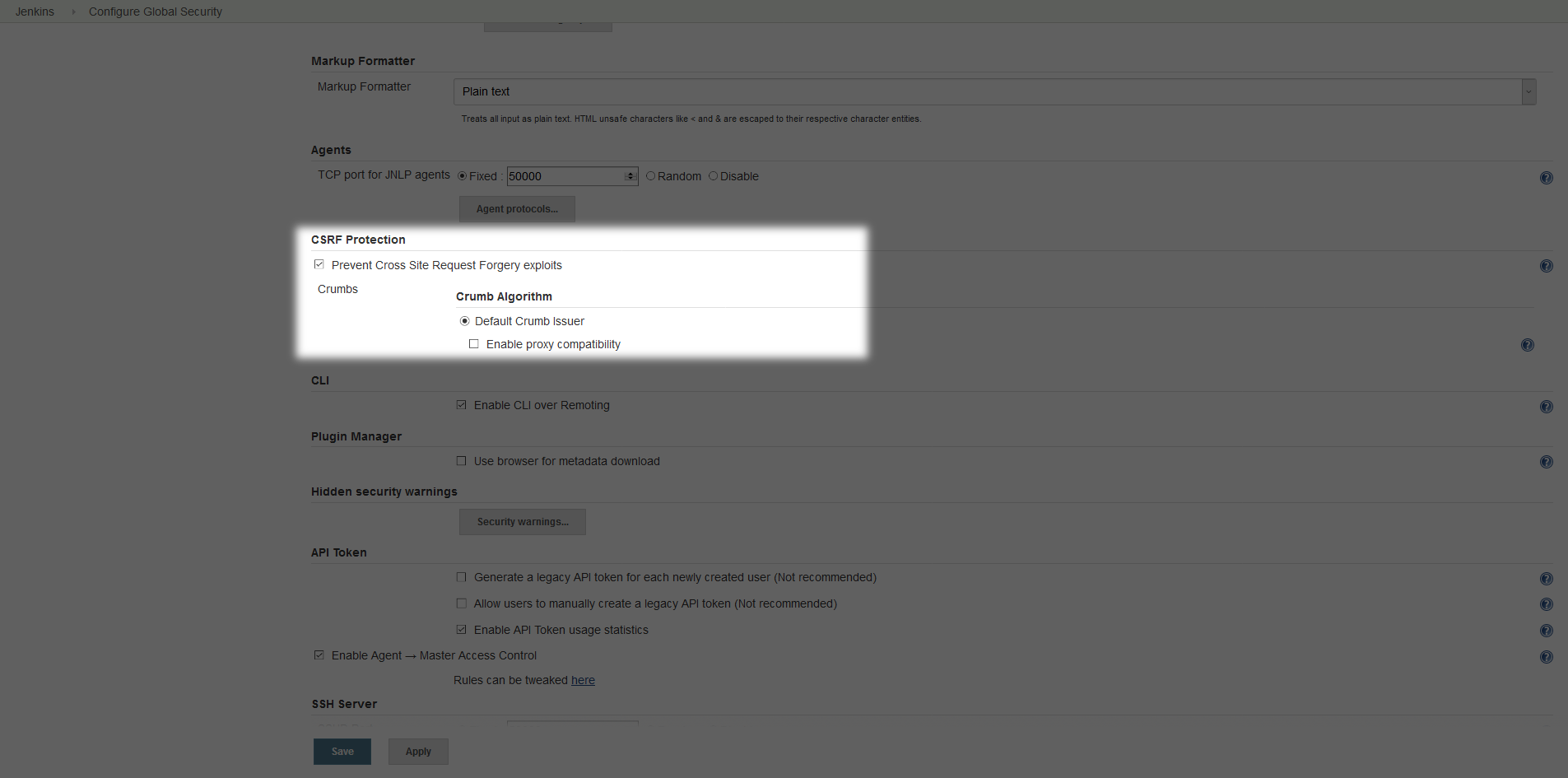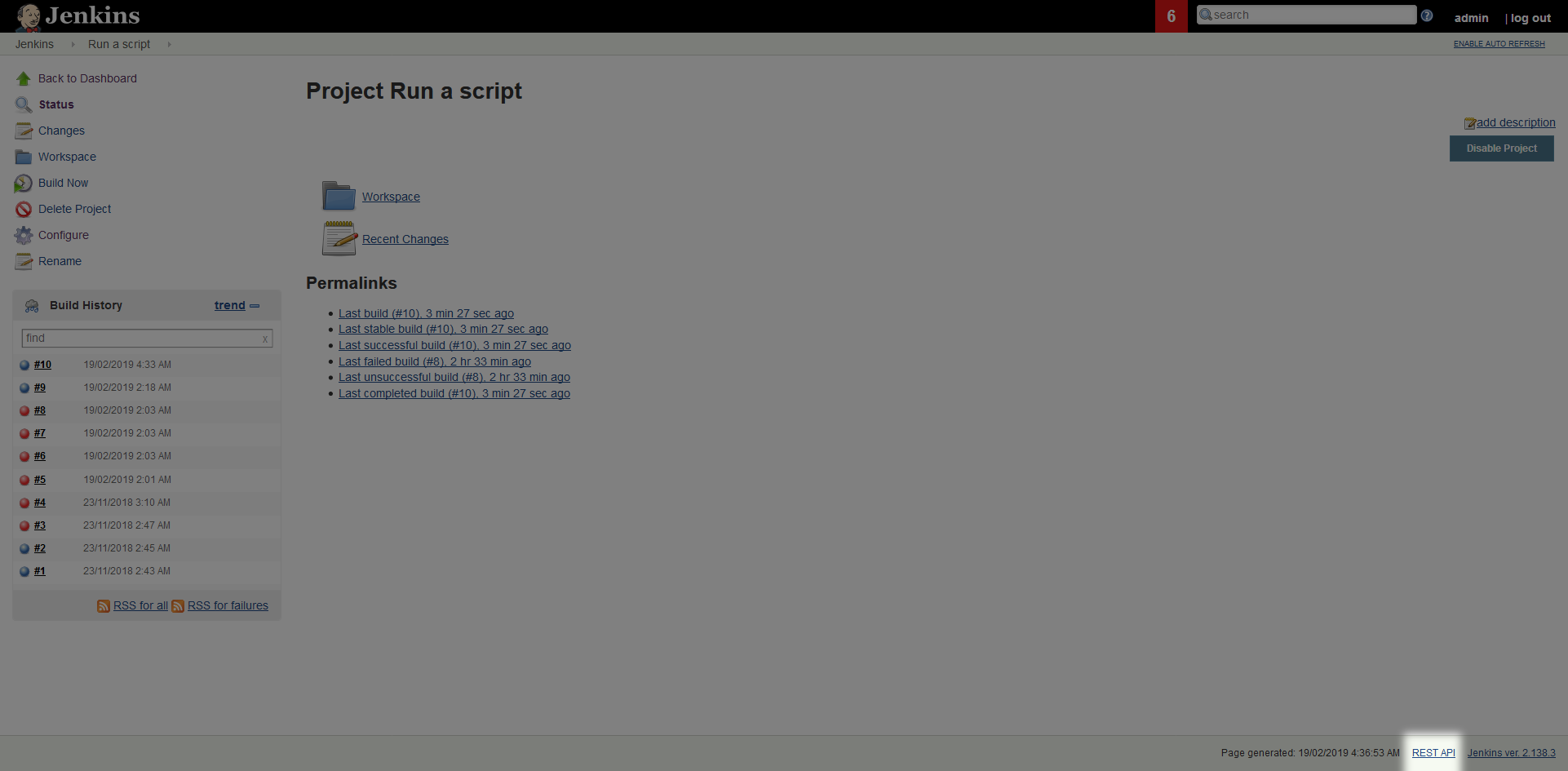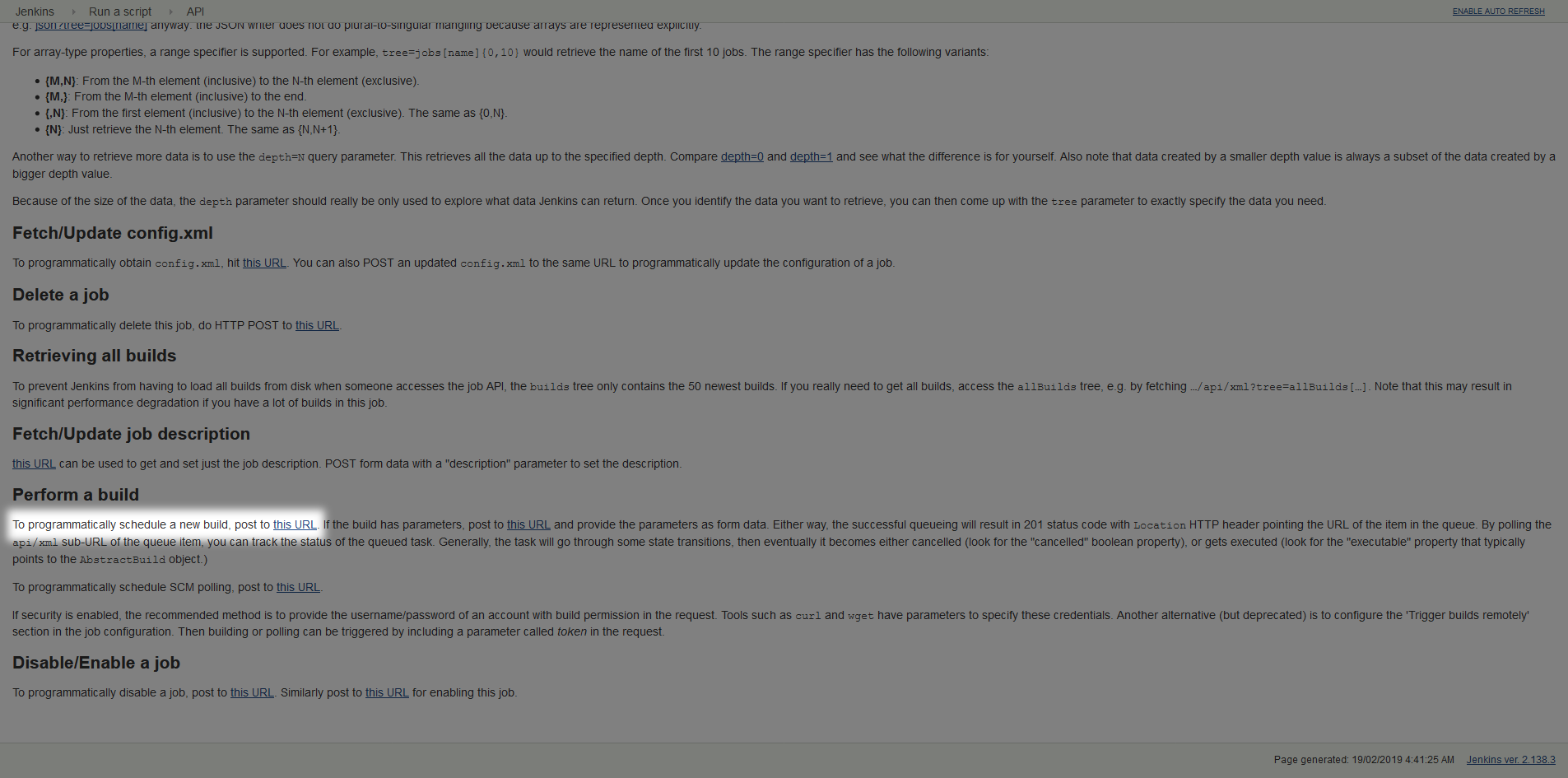Although the typical deployment workflow sees a CI system like Jenkins triggering a deployment in Octopus, it is sometimes useful to have the reverse where Octopus trigger builds in Jenkins. This page looks at how you can trigger a Jenkins deployment using its REST API and PowerShell.
Jenkins CSRF security
Jenkins has a security feature to prevent Cross Site Request Forgery attacks, which is found under Jenkins ➜ Manage Jenkins ➜ Configure Global Security ➜ Prevent Cross Site Request Forgery exploits.

In practical terms this means that each request to the Jenkins API needs to have what is known as a crumb defined in the headers. To generate this crumb, we need to make a request to http://jenkinsserver/jenkins/crumbIssuer/api/json.
The PowerShell below shows you how to generate a crumb.
$user = 'user'
$pass = 'password'
# The header is the username and password concatenated together
$pair = "$($user):$($pass)"
# The combined credentials are converted to Base 64
$encodedCreds = [System.Convert]::ToBase64String([System.Text.Encoding]::ASCII.GetBytes($pair))
# The base 64 credentials are then prefixed with "Basic"
$basicAuthValue = "Basic $encodedCreds"
# This is passed in the "Authorization" header
$Headers = @{
Authorization = $basicAuthValue
}
# Make a request to get a crumb. This will be returned as JSON
$json = Invoke-WebRequest -Uri 'http://jenkinsserver/jenkins/crumbIssuer/api/json' -Headers $Headers
# Parse the JSON so we can get the value we need
$parsedJson = $json | ConvertFrom-Json
# See the value of the crumb
Write-Host "The Jenkins crumb is $($parsedJson.crumb)"REST API links
Now that we have a crumb, we can use it to call the Jenkins REST API. You can find the URL to call to interact with the Jenkins system with the REST API link in the bottom right hand corner of each screen.

In this example we want to trigger the build of a Jenkins project, so we open the project and find that the REST API link points us to a URL like http://jenkinsserver/jenkins/job/Run%20a%20script/api/. If we open this link we’ll see a page of documentation describing the common operations that are available. In particular we are interested in the link that is embedded in the sentence to programmatically schedule a new build, post to this URL. The link takes us to a URL like http://jenkinsserver/jenkins/job/Run%20a%20script/build.

Triggering the build
We now have the links that we need to trigger a build, and the crumb that is required by Jenkins with each API request. Let’s finish off the PowerShell script that will make this final request to start a build in Jenkins.
$user = 'user'
$pass = 'password'
# The header is the username and password concatenated together
$pair = "$($user):$($pass)"
# The combined credentials are converted to Base 64
$encodedCreds = [System.Convert]::ToBase64String([System.Text.Encoding]::ASCII.GetBytes($pair))
# The base 64 credentials are then prefixed with "Basic"
$basicAuthValue = "Basic $encodedCreds"
# This is passed in the "Authorization" header
$Headers = @{
Authorization = $basicAuthValue
}
# Make a request to get a crumb. This will be returned as JSON
$json = Invoke-WebRequest -Uri 'http://jenkinsserver/jenkins/crumbIssuer/api/json' -Headers $Headers
# Parse the JSON so we can get the value we need
$parsedJson = $json | ConvertFrom-Json
# See the value of the crumb
Write-Host "The Jenkins crumb is $($parsedJson.crumb)"
# Extract the crumb filed from the returned json, and assign it to the "Jenkins-Crumb" header
$BuildHeaders = @{
"Jenkins-Crumb" = $parsedJson.crumb
Authorization = $basicAuthValue
}
Invoke-WebRequest -Uri "http://jenkinsserver/jenkins/job/Run%20a%20script/build" -Headers $BuildHeaders -Method PostRunning this script will display the crumb value, as well as the result of the API call to start a job. Notice that the result was a HTTP 201 code. This code indicates that a job was created on the Jenkins server.
PS C:\Users\Matthew\Desktop> .\jenkins.ps1
The Jenkins crumb is 574608b1e95315787b2fa0b74fce2441
StatusCode : 201
StatusDescription : Created
Content : {}
RawContent : HTTP/1.1 201 Created
Date: Tue, 19 Feb 2019 04:46:46 GMT
Server: Apache
X-Frame-Options: SAMEORIGIN
X-Content-Type-Options: nosniff
Location: http://jenkinsserver/jenkins/queue/item/11/
Content-L...
Headers : {[Date, System.String[]], [Server, System.String[]], [X-Frame-Options, System.String[]], [X-Content-Type-Options, System.String[]]...}
RawContentLength : 0
RelationLink : {}Learn more
Help us continuously improve
Please let us know if you have any feedback about this page.
Page updated on Sunday, January 1, 2023